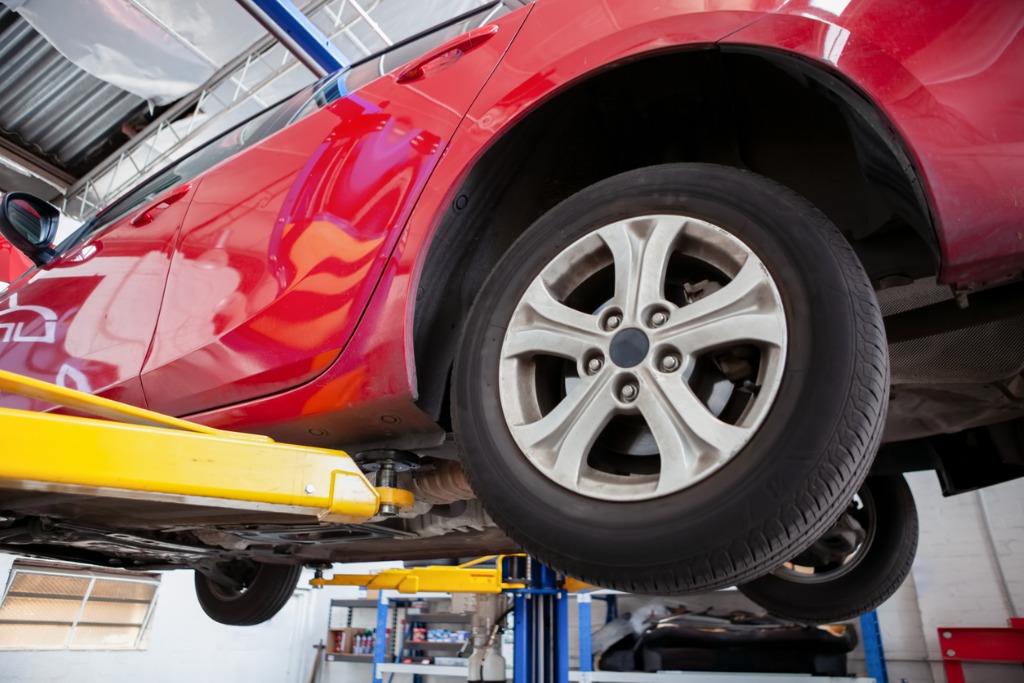Introduction
Accidents are an inevitable aspect of life, and regrettably, they can occur unexpectedly to anyone. From minor fender benders to more serious collisions, one undeniable fact remains: the structural stability of your vehicle might be jeopardized. In such instances, the necessity of frame straightening emerges as crucial in reinstating your vehicle’s safety and operational capabilities. This article will explore the significance of frame straightening, outline the steps encompassed in the process, and emphasize the pivotal role of entrusting professionals, such as Cyclone Collision Center, to undertake this imperative task.
Understanding Frame Damage
When a vehicle is involved in an accident, the force of the impact can cause significant damage to its frame. The frame of a vehicle serves as its structural backbone, providing support and stability to all other components. It’s like the skeleton of a car, and any damage to this structure can compromise the safety and performance of the vehicle.
Common types of frame damage include:
- Twisting: This occurs when the frame is bent out of its original shape, causing uneven weight distribution and affecting the vehicle’s handling.
- Sagging: Sagging happens when a portion of the frame sags or droops due to damage, leading to misalignment issues.
- Cracks and fractures: These are more severe forms of frame damage, where the frame may have cracked or broken, rendering it unsafe to drive.
- Stretching: Stretching of the frame occurs when certain sections become elongated, which can affect the vehicle’s overall dimensions.
Why Frame Straightening is Crucial
- Safety: The most crucial reason for frame straightening is safety. A compromised frame cannot provide the necessary protection in case of another accident. It can lead to the collapse of the vehicle’s structure and result in more severe injuries to the occupants.
- Vehicle Performance: A damaged frame affects the alignment of wheels, suspension components, and other vital systems. This can lead to issues such as uneven tire wear, poor handling, and decreased fuel efficiency.
- Resale Value: If you plan to sell or trade-in your vehicle in the future, a damaged frame can significantly reduce its resale value. Prospective buyers are often wary of vehicles with a history of structural damage.
The Frame Straightening Process
Frame straightening is a complex and precise process that should only be carried out by trained professionals in well-equipped auto repair shops. Here’s a brief overview of the steps involved:
- Assessment: The first step is a thorough inspection of the frame to assess the extent of the damage. This often involves using specialized equipment like laser measuring systems to detect even minor deviations.
- Disassembly: To access the damaged areas of the frame, certain vehicle components and panels may need to be removed. This can include the suspension, exhaust system, and sometimes even the engine.
- Straightening: Frame straightening is typically performed using hydraulic machines and computer-controlled equipment. These machines apply precise pressure to the damaged areas, gradually bringing the frame back to its original specifications.
- Measuring and Alignment: Throughout the straightening process, measurements are taken to ensure that the frame is aligning correctly. Advanced computer systems help technicians monitor and adjust the frame in real time.
- Welding and Reinforcement: In cases where the frame has suffered severe damage or fractures, welding and reinforcement may be necessary to restore its strength.
- Quality Control: After the frame has been straightened, the vehicle is carefully inspected to ensure that all structural components are in place and properly aligned.
- Reassembly: Once the frame is confirmed to be within manufacturer specifications, the removed components are reassembled, and the vehicle undergoes further testing to ensure its safety and performance.
Why Professionals Are Essential
Frame straightening is not a DIY job, nor is it something that should be entrusted to just any repair shop. Here’s why it’s essential to rely on professionals for this critical task:
- Expertise: Skilled technicians have the knowledge and experience to assess the extent of frame damage accurately and determine the best approach for straightening it.
- Specialized Equipment: Frame straightening requires specialized equipment that is typically only available in professional auto repair facilities. These machines are designed to apply the precise amount of force needed for the job.
- Manufacturer Guidelines: Professionals adhere to manufacturer guidelines and specifications, ensuring that the frame is restored to its original condition.
- Safety Standards: Professional repair shops prioritize safety and ensure that the vehicle meets all safety standards and regulations after frame straightening.
- Insurance: Many insurance companies prefer to work with certified repair shops for frame straightening, making the process smoother and more transparent.
Conclusion
Frame straightening is a critical step in the process of repairing a vehicle after an accident. It’s not just about aesthetics; it’s about ensuring the safety and performance of your vehicle. Attempting to straighten a frame without the right expertise and equipment can lead to further damage and safety hazards.
If your vehicle has been in an accident and requires frame straightening, it’s crucial to trust the job to professionals who have the knowledge, experience, and equipment necessary to do it correctly. By prioritizing safety and quality, you can ensure that your vehicle is restored to its pre-accident condition, providing peace of mind for your future journeys on the road.
Experience the exceptional offerings of Cyclone Collision Center now! Visit us at 3080 Cropsey Ave, Brooklyn, NY 11224, and let our proficient team rejuvenate your car’s paintwork to its authentic magnificence. Cruise with pride and assurance following our specialists’ transformative work on your vehicle.
